21C Educator: 02 Grit and Growth of ss Mindsets
Hi Team,
Growth Mindset has landed in Sunwest. It abounds, it’s all the rage, and hard to avoid. I, like many people, after fi rst understanding the “gist” of it, wanted to run with it and see what good I could do in helping students start expanding beyond their pre-conceived notions of abilities, but in digging further I realized I’d gone right off track from the start. And I wasn’t alone in that error.
rst understanding the “gist” of it, wanted to run with it and see what good I could do in helping students start expanding beyond their pre-conceived notions of abilities, but in digging further I realized I’d gone right off track from the start. And I wasn’t alone in that error.
Misunderstandings of Growth Mindset – what are we failing to understand?
From the article “Carol Dweck Revisits the ‘Growth Mindset'”, there are some really valuable corrections I’m glad to have studied. I have a feed in my TweetDeck just of comments and there are a lot of them talking about switching focus to effort, etc. I think it’s great to see that even those behind this philosophy of feedback are revisiting their own successes and offering corrections now. I also studied another article, “Growth Mindset: Clearing up Some Common Confusions” from the Mindshift website. To get the best out these correction messages, I’m going to blend their points together.
The basics of their correction message: It’s not about having one or the other of a fixed or growth mindset – we all have both and it’s likely to stay that way.
Correction 1: The biggest misconception is about growth minset being just about effort. It’s about their effort using learning strategies to help move from a blocked learning opportunity to get around the block. Praise effort using strategies – metacognitive awareness needed for this. Also, if you only praise effort, whatever behaviour change may happen isn’t influencing their belief about their abilities. Them having an arsenal of strategies to use when confronted by challenging tasks will help them develop a larger sense of what they’re capable of.
Correction 2: The focus on praise of effort should only happen if learning is also happening. This made complete sense to me – praising a student who’s hitting a wall and building resentments towards a subject area only digs them in feeling more helpless. Yes I’m giving effort but getting no where! The mindset focus should be on the short and the long term growth of the student – how they learn to manage challenges. Understanding the “yet” component. Think smarter.
Correction 3: Many people out there are praising effort saying everyone’s trying and that’s all we want, but this still allows / almost hides learning achievement gaps, and this was not the goal. There are achievement gaps – help kids focus on strategy use to bridge those gaps. Have to start small: start switching focus to efforts, yes, but then eventually start releasing responsibilities for learning / deciding which strategies should be applied to a task, etc.
Correction 4: Fixed and Growth mindset is being used as labels – explanations why some students aren’t progressing to success. Again, the intention is to develop new ways of approaching tasks, rather than just start identifying them with a label of being fixed or growth mindset focused. Also, a lot of our school and cultural systems are set up with a fixed mindset focus – much of what is given to students as tasks for testing is superficial, irrelevant, unengaging, not learner-centered. It’s not just about the child or teacher, but the larger system they’re learning in.
Correction 5: A lot of people (teachers included) agree with these ideas and are claiming to be on the Growth mindset path, but then they still fault and chide students for their failures rather than point out what was learned by e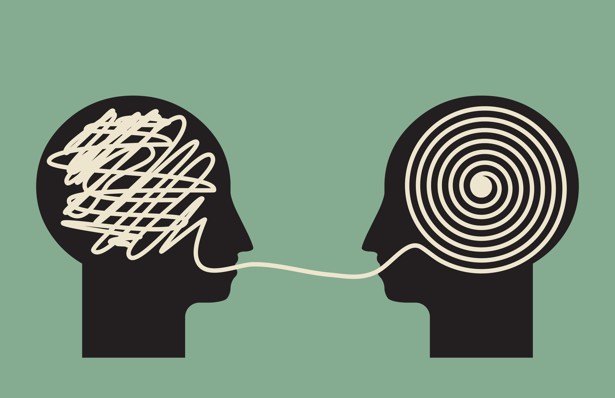 xperiencing the failure. There are many, many out there praising growth mindset but exhibiting what Dueck identifies as a “false growth mindset”. Important that teachers are modelling lifelong learning – making their attempts at challenging tasks visible for students.
xperiencing the failure. There are many, many out there praising growth mindset but exhibiting what Dueck identifies as a “false growth mindset”. Important that teachers are modelling lifelong learning – making their attempts at challenging tasks visible for students.
Correction 6: It’s not a “cured” kind of concept. If you believe in this way of approaching learning, you’re never cured of your unfortunate fixed mindset; it’s bred so deeply into our culture that we’re always going to display both of these mindsets, and that’s okay. Even starting to recognize when you’ve responded with a fixed mindset attitude.
It helped that she identified the behaviours of teachers still in fixed mindset:
– fear new challenges or avoid them
– feel frustrated when students aren’t working towards a decided goal
– feel incompetent or defeated at times
– look for excused to reduce mental stress of a fail
– become defensive, angry, crushed by potential criticism
– feel envious / threatened by someone succeeding where you didn’t
You’re doing well at moving to Growth mindset if you do the following:
– seek to learn from feedback (good or bad)
– accept your thoughts as legitimate and work through them
– focus on developing and changing qualities through practice / opportunity
– take on challenges you’re unsure of / learn from failure if it happens
– work more efficiently / harder since you’ve let go of fear of failing
– learn to persevere / develop a “Try It” attitude
What separates fixed from growth mindset actions?
I commented on someone’s post in the Google+ community a question or hypothesis that came to mind – girls display more grit than boys (at least in my school) and my theory is that it’s related to more team sports  involvement by the girls. There are few boys teams here, but the girls teams are hardcore, very driven and success-focused and it’s the students on those teams who are always double checking expectations of assignments, submitting tasks early, revisiting a task to correct and resubmit and generally pay attention to their school success. I asked the question – if we could develop more of an interest and drive for our m.y. and h.s. boys, would that in part contribute to a greater sense of grit?
involvement by the girls. There are few boys teams here, but the girls teams are hardcore, very driven and success-focused and it’s the students on those teams who are always double checking expectations of assignments, submitting tasks early, revisiting a task to correct and resubmit and generally pay attention to their school success. I asked the question – if we could develop more of an interest and drive for our m.y. and h.s. boys, would that in part contribute to a greater sense of grit?
Here’s my descriptions of those with and without grit. Not that it’s always the case, but in much of my teaching I’d describe the behaviours / attitudes on the left as more associated with female students and behaviours / attitudes on the right with male ones. In my current classes, there’s specifically more room for the boys to develop growth mindset habits.
Ironically, I came across another article that happened to be connected to Dweck, the graduate supervisor of the article, in Psychology Today online from 2011 called “The Trouble with Bright Girls: For Women, Why Ability Doesn’t Always Lead to Confidence”. It related the experience of many professional women feeling overlooked or inferior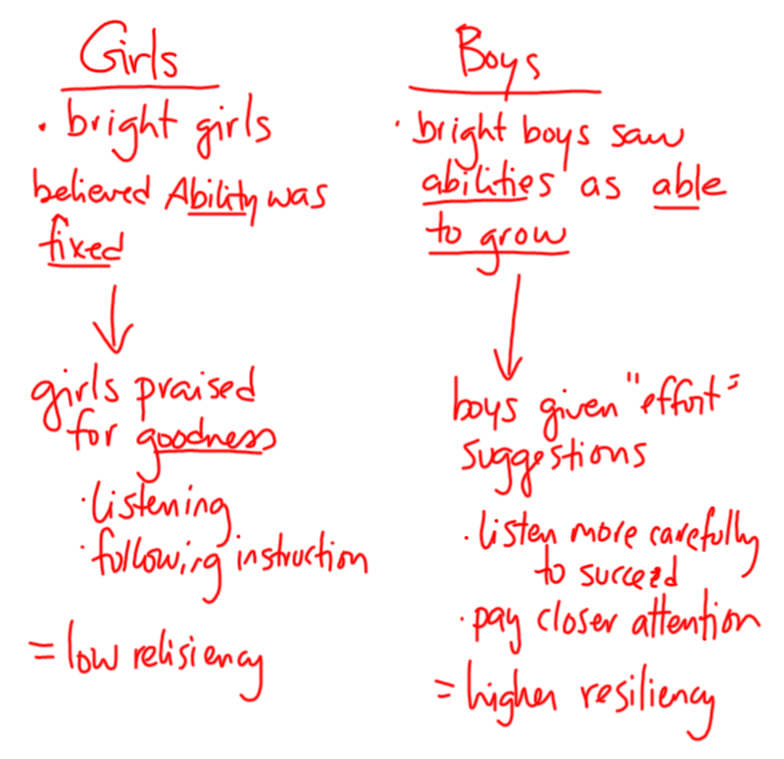 to their equal male counterparts in the workforce; its message was that women have to perform extraordinarily to compare to male equivalents, but still have more self-doubt than males. It connected this female mental habit to a study done by Dweck of Grade 5 students. (This is where it gets interesting for me and seems to be in real contrast to my experience of high school student abilities.) In the study, they found girls routinely outperformed boys in every subject, but their resiliency levels were very different. This has now impacted women in the workforce who are scared of failing so they’re more likely to play it safe. However, this seems to contradict what I witness in high school with my own students. Again, I wonder if their Team Building exercises through sports has influenced their perseverance and drive, these girls? Questions questions!
to their equal male counterparts in the workforce; its message was that women have to perform extraordinarily to compare to male equivalents, but still have more self-doubt than males. It connected this female mental habit to a study done by Dweck of Grade 5 students. (This is where it gets interesting for me and seems to be in real contrast to my experience of high school student abilities.) In the study, they found girls routinely outperformed boys in every subject, but their resiliency levels were very different. This has now impacted women in the workforce who are scared of failing so they’re more likely to play it safe. However, this seems to contradict what I witness in high school with my own students. Again, I wonder if their Team Building exercises through sports has influenced their perseverance and drive, these girls? Questions questions!
The Power of “Yet”
My approach to the potential of using the word “Yet” was to make a bulletin board students would interact with on a continual basis. I asked them to identify completed assignments that they’ve left behind potential in. I focused on marks, which for now is the motivating factor I’m relying on; marks they’ve given up or left behind with the teacher. IF they’re able to keep up with their work in the first place, it leaves them a bit of room cognitively / time-wise to revisit past assignments. This is where it’s challenging to reach those male students whom I’m identifying as most in need of understanding and accepting this “yet” potential – they’re so often lagging behind and putting off work. I’ve had a few students in the lacking-grit category who have asked about redoing work, so there’s potential to be found there. It’s an example of my own resiliency to try and aim for these gritless few, since I may achieve nothing with this; I’ve grit enough to try!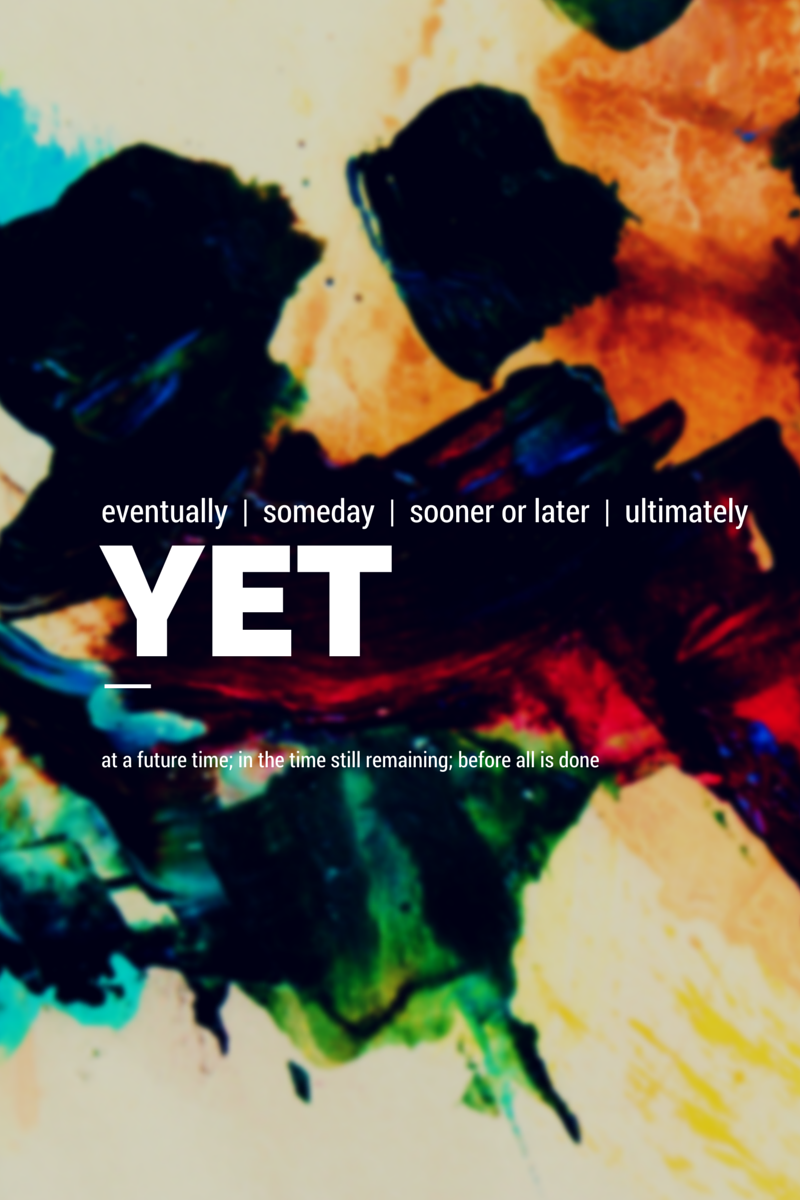
With the board, they’ve identified assignments they can revisit and there are many of them who’ve contributed examples; these are less successful assignments than they could be. If they have the time to re-approach these tasks and try again, once they’ve handed it back in for review they’re to move their paper item to the right side of the board. My purpose in that is so students will visually recognize this process of revision by others. How many slips of paper will move to the right – we will see. I was surprised, though, by a few who recently came to me for the stapler to “move [their] paper” even though they were in a Math class or something.
Also, because every grade above Gr 10 has taken my Psychology class, they understand how the brain and neurons work and connect. If I can convince them or help them visually recognize that the strained look on someone’s face in frustration is a sign of their brain growing connections, and those connections help make for faster understanding in the future, maybe they’d buy in just a tad. “Yet” is related to the brain and they know the brain.
Fail Fail Fail Fail Fail
I’m always looking for more metacognitive tasks to have students do in their AR section for ELA. This includes a variety of questions or activities that help them understand themselves more as a learner. What I appreciate about this focus in our class is what they learn they also apply to their other classes. This past week, when I studied one article that identified four types of mistakes (read about it below), I was pleased to have found another task I can use in that arsenal.
“A muscle only grows if you work it till it fails” (Peter Bregman – “Why You Need to Fail” published in Harvard Business Review). This makes sense to me, so I anticipate it being sensible as well to students. I’d like to create a wall mural in our hallway or in my own classroom that relates to this effect – every branch of the dendrite grew with a challenge. It bridged the gap between itself and another neuron with continued efforts towards success and that success came when it could communicate with the nearby neuron.
“Learning changes the wiring in our brain” (Bregman).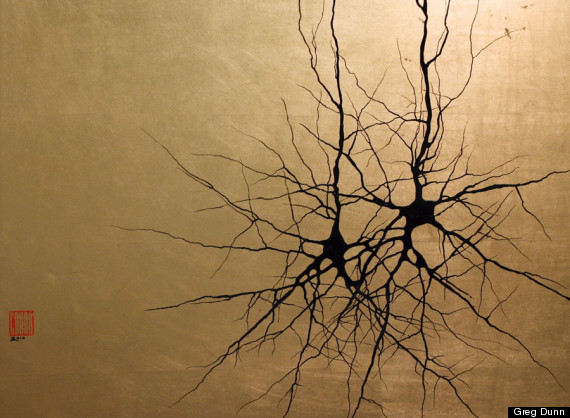
This (image on the side) could be my mural on the wall, but beside it I’d put a less-developed neuron. I’d add some quote to the one on the left, the one left unchallenged that will never grow beyond what it is, and find another quote to go with the developed neurons on the right, that grow in ability because they’re strained.
One great article identified “Mistakes Are Not All Created Equal” from Mindset Works website. It discusses the fear ss associate with making mistakes, though so often that’s where learning happens is in those mistakes. The article talks about trying to foster an attitude of appreciation and positivity when learning and making mistakes; if you’re trying new things you may initially fail, but you’re at least attempting something new.
In particular, the article identifies four types of mistakes and grades them on a scale of how often they happen and how valuable the learning can be from them. I’d like to use this as an Assess and Reflect task and have students try to identify examples in their own learning of each.
- Stretch Mistakes are good mistakes to make. They happen innocently when we’re stepping outside our understanding. We have to watch for and learn from Stretch Mistakes. You should aim for a Zone of Proximal Development – students should always try to stay aware of this, identify for themselves what they’re trying to learn and if they’re moving towards success, then readjust the challenge and repeat; stretch for learning, but not outside of abilities. Also, three damaging things can be learned from these mistakes:
- because if they happen over and over it’s instead an indication of mindless work, going through the motions with little focus or effort.
- Another reason for repeated S.M. examples would be because you’re approaching it with the wrong strategy, so you need to evaluate and readjust.
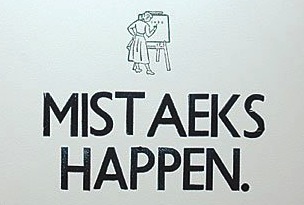
- Sometimes, too, you’re trying something that’s too far beyond your understanding level, so you have to readjust to a more realistic place.
- Aha Mistakes are positive mistakes, but less common. They’re also mistakes we learn from once we’ve reflected and had that realization – got it – moment. There’s often something to be learned in this mistake, like that we had a right idea and wrong label or other similar errors. Teachers have little influence over these types of mistakes, except to help students recognize them.
- Sloppy Mistakes are harmful, negligent errors. The positive is that sloppy mistakes can learn to Aha moments, where a student learns and realizes something important, like that studying off class notes rather than someone else’s study sheet will be more successful for them. The negative or obvious of sloppy mistakes, though, is the clear indication of indifference to a task or lack of concentration or focus. As teachers, we can often identify the reasons why students make Sloppy Mistakes, but it’s whether a child is motivated that reduces their occasion for these types of errors.
- High Stakes Mistakes are the opposite of Stretch Mistakes. Where stretch mistakes have the goal of pushing students to new learning areas, High Stakes Mistakes are when the testing of that learning is all on the line – there’s no desired growth but only evidence of growth so errors in this realm are very undesirable. There’ll be little to no learning gained from these types of mistakes.
Again, I think students could benefit from starting to recognize the types of mistakes and which have value.
What I think is most beneficial from my review of the benefits of failing is an Edutopia article titled Five Minute Film Festival: Freedom to Fail Foward. In it, someone’s gathered seven of the best short PSA-type videos on the value in the fails that led to success. It includes a number of the following references:
- Thank you for teaching that falling only makes us stronger.
- Fail 100 times as long as you succeed once.
- If you’ve never failed, you’ve never tried anything new.
- a “Rube Goldber Machine” will teach you if you don’t succeed, try try try again.
- innovation/learning new things is messy.
- Finding a no (fail) quickly lets you move faster to a yes.
- It can be awesome if you failed – if you learn something.
- For every great mistake you make be grateful, for you know you won’t make that mistake again.
Here’s the most inspiring of the videos:
Moving Kids Towards a Growth Mindset
Though this is clearly a great philosophy of learning, it will take some time to truly adopt it myself. I’ve been noticing my own replies of fixed mindset to students; some phrases come out of teachers like a repeating record. To start becoming more aware of this myself, though, will be the first goal. To try using the language and encouraging students to focus on what’s been gained will be the goal. There are a lot of students really stuck in the Fixed Mindset path – the right-hand column of my chart. How can I even motivate them to accept they’re in that mindset and inspire them to even care about the benefits of the thoughts from a growth mindset? I see many students just barely keeping up – they come to school more focused on the social than academic. School and assignments / grades are just there, not the focus. They’re often disorganized; once we’re done working on it in class, it’s out of their mind and would be forgotten if not for the constant questions / reminders from me of “what’s the status of (x)?” In a class where they’re given time to work on a project or learning task, some remain more off-task than on. It’s often the fixed mindset ones, actually, and more than likely it’s connected – have it in their mind they’re not capable or only marginally capable so they avoid trying, procrastinate, and play around so that’s the excuse. It’s cyclical, for sure. So in processing this, I guess that’s my first goal is to help them accept abilities aren’t fixed. Open the door for potential and go from there.
Some targets to focus on:
- repeat / encourage acceptance that abilities aren’t fixed
 focus on learning goals (what’s to be learned here)
focus on learning goals (what’s to be learned here)- help establish that safe sense – safe to risk mistakes
- reinforce and communicate often confidence in all ss being able to rise to challenge
Here is a collection of resources I’ve found that may help with this:
- Growth Mindset Framing Tool
- Effective Effort Rubric – teacher or self-assess student behaviours according to: effort, resiliency, completion level etc.
- Growth Mindset Feedback Tool – priming learning tasks with g.m. approaches
- The Praise Makeover – for teachers – changing your responses to growth mindset focus
- How Educators Can Assist Learners in Developing a Growth Mindset (infographic)
- You Can Grow Intelligence – YouTube video (aimed for youth)

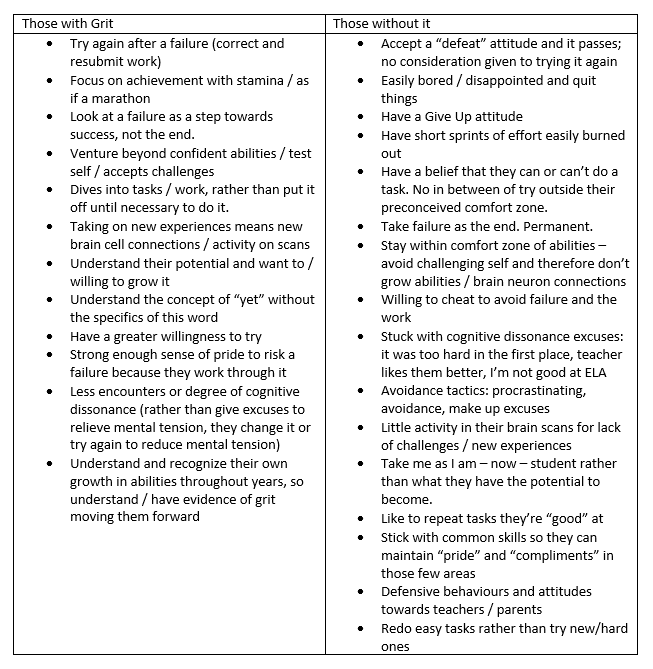
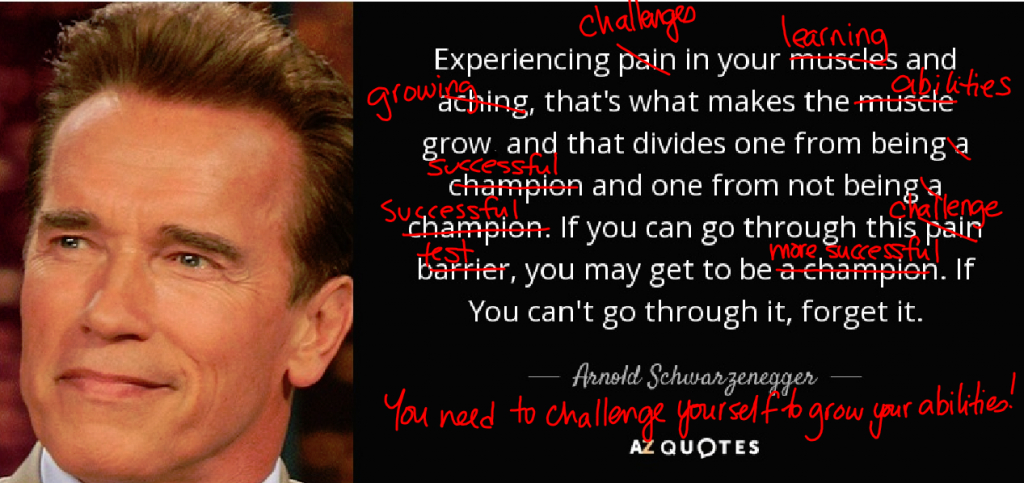
I teach pre-engineering in Westlake, Ohio and am doing some of my own soul searching in terms of Grit and Growth Mindset. I liked your,”… encouraging students to focus on what’s been gained will be the goal.” Being project/problem-based, I struggle with both grading and trying to get kids to do inspired work. I’ve enjoyed reading your reflections. It’s not an end-game thing, but a climbing of the endless mountain. Kurt
Hi Kurt,
Very cool that you’re able to make use of or benefit in some way from the synthesis of my study on that topic. My school division was quite generous for three years and gave prep time for one teacher from each school (for three years) to take a Masters-type course they developed that helped those teachers improve their understanding of 21st century goals in education. Collaboration, creativity, growth mindset, etc. I gained a significant amount from my study of it and really appreciated being given the time to study it all. It has made an impact for my students as well: we talk a lot individually about goal setting, about avoiding language like “can or can’t” and replace it with developing skills or strengths and weaknesses that we all that. In education, I find so many parents come in to talk and reinforce their own struggles – “I could never do math” or “I hated reading”. And it only reinforces those ideas for their kids, instead of saying “I had to work harder at math than my brother, but I learned it and got through it.”
Really, when it comes down to it, much of the specific content we teach may be forgotten, some easily and others slowly over time, but the strategies for how to approach a challenging learning opportunity, or how to work as a team and collaborate even with the most difficult people, etc Those are the types of skills they’ll carry with them.
I’m glad you left a note. Was cool to hear it’s out there and someone read it. I wish you great success in your own journey!
Cheers from Canada!